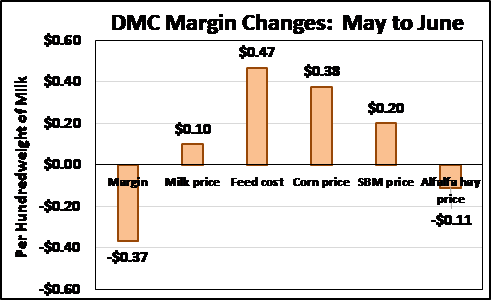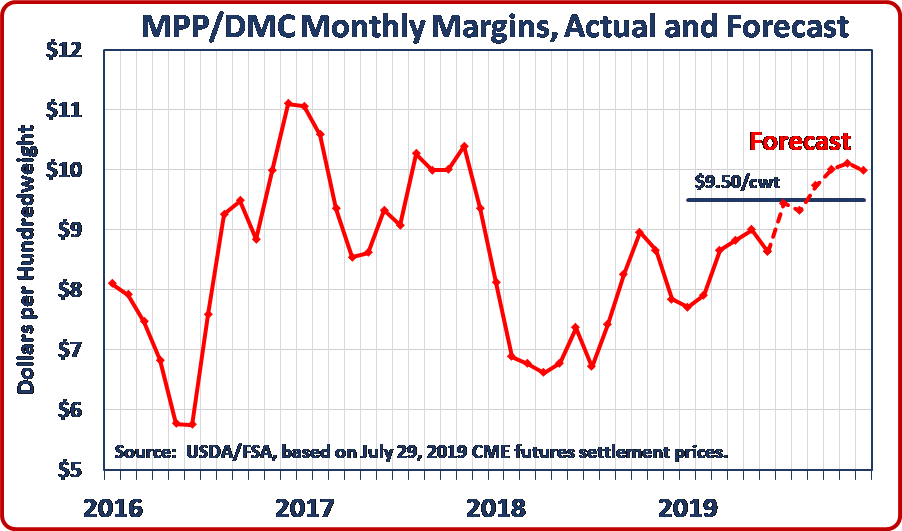Milk producers will do better the second time around than they did in the first round of Market Facilitation Program payments, which the U.S. Department of Agriculture announced July 25.
The trade-mitigation payments are the key component of the $16 billion aid package the White House has offered, intending to compensate agricultural producers for lost and diminished export markets resulting from the trade policy wars.
MFP payments will be made in up to three tranches, with the second and third tranches to be determined as market conditions and trade opportunities dictate. For dairy farmers, the payment rate is $0.20/cwt., compared to a $0.12 rate used in 2018. The first tranche will include 50% of the total payment, which for dairy farmers should mean an initial rate of $0.20/cwt. on half of their production history. The other 50% will be divided between the following two tranches. If conditions warrant, the second and third payments will be made in November and January 2020. USDA will begin issuing the first payments in mid-to-late August.
The higher rate for dairy is a welcome development and reflects NMPF efforts both last year and this one to convince the administration that losses suffered by dairy farmers have been greater than the compensation provided to them.
While an improvement over the first MFP payments, NMPF still expressed concerns over details of the new program and will work with USDA to implement the initiative in as pro-farmer a way as possible. NMPF opposed USDA’s continued use of dairy farms’ outdated production history in assessing payments and will continue working with the agency and allies in Congress to push the USDA to update that data.
“We appreciate the efforts of USDA and the White House to assist farmers who have suffered significant losses due to retaliatory tariffs,” NMPF President and CEO Jim Mulhern said. “Dairy producers have so far lost more than $2.3 billion in revenues since tariff escalation began in earnest one year ago. USDA’s new approach raises the level of aid to dairy farmers from last year’s program, a step in the right direction. We also urge the department to revise the outdated production history information used to calculate payments, because these old production numbers lessen the effectiveness of the program.”
In addition to the direct payments, USDA will spend$1.4 billion to buy commodities and redistribute them to food banks, school cafeterias and other nutrition programs, including $68 million of milk. Another $100 million is earmarked for food and farm groups, including the U.S. Dairy Export Council, to develop new export markets. MFP signup at local FSA offices will run from Monday, July 29 through Friday, December 6, 2019.
The second round of government assistance for farmers, and the inability of the aid package to replace the near-term losses for dairy, shows the need for resolution to the trade wars, Mulhern said.
“Today’s announcement underscores that dairy farmers need to rely on trade, not aid, to prosper in a global marketplace,” he said. “Resolving the current trade impasse with China and aggressively expanding ties with other trading partners also is essential to make these aid packages unnecessary. We are also working with the administration and Congress to pass USMCA, which would immediately create new opportunities for U.S. dairy.”







